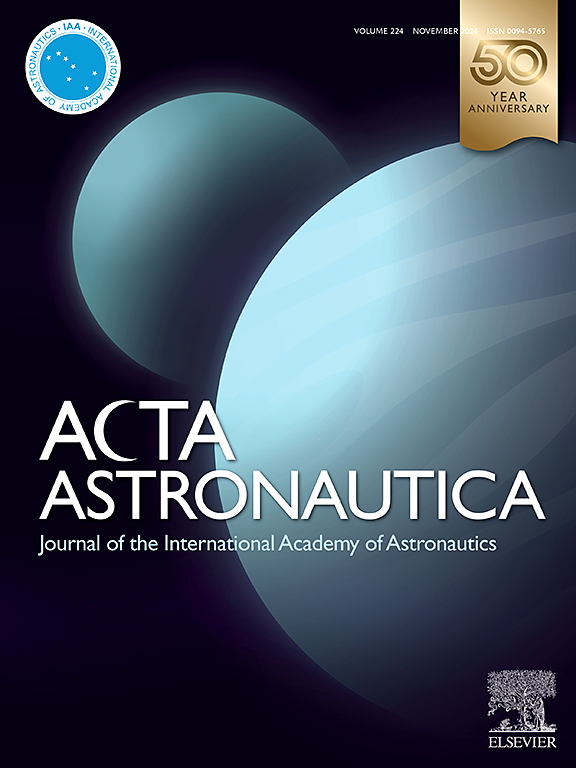Comparison between direct and indirect measurements for externally wetted electrospray thruster with adapted analytical balance
IF 3.1
2区 物理与天体物理
Q1 ENGINEERING, AEROSPACE
引用次数: 0
Abstract
Ionic liquid electrospray propulsion systems are a promising technology for the rapidly growing small satellite market, potentially exhibiting high specific impulse and efficiency even at very low power. Direct performance characterization of electrospray thrusters is a challenging issue, given the low thrust and mass flow rate values. In this work, an analytical balance was modified for direct performance characterization of electrospray thrusters with sub-micronewton thrust uncertainty and sub-milligram-per-hour mass loss rate measurements. An electrostatic calibration device was built with commercial-off-the-shelf heat sinks as electrostatic combs, and characterized with high-precision calibration weights to correct the measurements of the balance in vacuum. The performance of an externally wetted electrospray thruster was obtained with simultaneous direct and indirect measurements by setting up the modified balance and a time-of-flight mass spectrometer in tandem. Direct thrust values of the order of N and in situ mass loss rates mg/h were consistently measured simultaneously. Thrust results concurred with indirect measurements with an average relative difference of 10.5%, showing a consistent ratio to the emitted current of N/A. In contrast, the mass flow rate estimated from time-of-flight data was notably lower than the mass loss rate measured with the balance, with relative differences from −23.1% to −64.7%. Possible causes for this discrepancy and methods for their diagnosis are proposed.
外湿式电喷雾推力器直接测量与间接测量之比较
离子液体电喷雾推进系统对于快速增长的小型卫星市场来说是一项很有前途的技术,即使在非常低的功率下也有可能表现出高比冲和效率。考虑到低推力和质量流量值,电喷雾推进器的直接性能表征是一个具有挑战性的问题。在这项工作中,对分析天平进行了改进,用于亚微牛顿推力不确定度和亚毫克/小时质量损失率测量的电喷雾推进器的直接性能表征。采用商用散热片作为静电梳,采用高精度定标砝码对真空天平的测量结果进行校正。采用改进天平和飞行时间质谱联用的方法,对外湿式电喷雾推力器的性能进行了直接测量和间接测量。μN数量级的直接推力值和原位质量损失率<;同时连续测量Mg /h。推力测量结果与间接测量结果一致,平均相对差为10.5%,与发射电流的比值为≈0.1μN/μA。相比之下,从飞行时间数据估计的质量流率明显低于用天平测量的质量损失率,相对差值为- 23.1%至- 64.7%。提出了这种差异的可能原因和诊断方法。
本文章由计算机程序翻译,如有差异,请以英文原文为准。
求助全文
约1分钟内获得全文
求助全文
来源期刊

Acta Astronautica
工程技术-工程:宇航
CiteScore
7.20
自引率
22.90%
发文量
599
审稿时长
53 days
期刊介绍:
Acta Astronautica is sponsored by the International Academy of Astronautics. Content is based on original contributions in all fields of basic, engineering, life and social space sciences and of space technology related to:
The peaceful scientific exploration of space,
Its exploitation for human welfare and progress,
Conception, design, development and operation of space-borne and Earth-based systems,
In addition to regular issues, the journal publishes selected proceedings of the annual International Astronautical Congress (IAC), transactions of the IAA and special issues on topics of current interest, such as microgravity, space station technology, geostationary orbits, and space economics. Other subject areas include satellite technology, space transportation and communications, space energy, power and propulsion, astrodynamics, extraterrestrial intelligence and Earth observations.
 求助内容:
求助内容: 应助结果提醒方式:
应助结果提醒方式:


